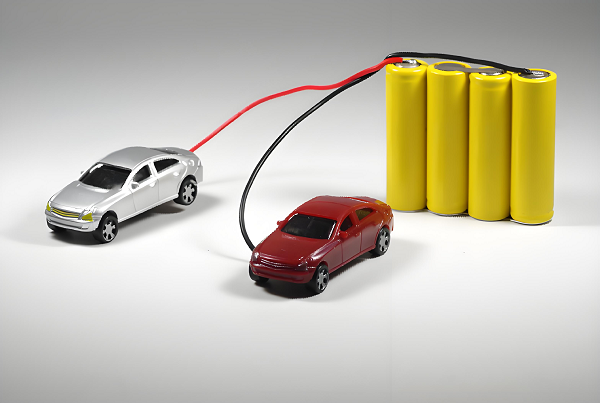In today's era of rapid technological development, lithium batteries, as a key energy storage device, have long been deeply integrated into all aspects of our lives, from daily mobile phones and laptops to electric vehicles that lead the trend of green travel, to energy storage systems that power homes. Lithium batteries are indispensable. Did you know that the lithium battery family actually has many members, and different types of lithium batteries have their own advantages in performance, characteristics and application scenarios. Today, let us go deep into the world of lithium batteries and explore the mysteries of common lithium batteries.

Lithium-ion batteries: widely used "all-round players"
Lithium-ion batteries are the most well-known and widely used members of the lithium battery family. Its working principle is based on the back-and-forth movement of lithium ions between the positive and negative electrodes, like a never-ending "relay race". During the charging process, lithium ions "run" from the positive electrode to the negative electrode and embed into it; during discharge, lithium ions move in the opposite direction, escape from the negative electrode and return to the positive electrode, while releasing electrical energy to power the device.
The positive electrode materials of lithium-ion batteries are rich and varied, and common ones include lithium cobalt oxide, lithium iron phosphate, and lithium cobalt nickel oxide. Different cathode materials give batteries different performance characteristics. For example, lithium cobalt oxide has a high energy density and can provide strong and long-lasting power support for devices, which is why it is widely used in small electronic devices such as early mobile phones and laptops. However, lithium cobalt oxide has a high cost and cobalt resources are relatively scarce, which limits its large-scale application to a certain extent. Lithium iron phosphate is known for its high safety and long cycle life.
Its electrothermal peak can reach 350℃ - 500℃. In contrast, lithium manganese oxide and lithium cobalt oxide are only around 200℃. This makes lithium iron phosphate very popular in electric vehicles and energy storage fields with extremely high safety requirements. Lithium cobalt nickel oxide has found a good balance between energy density and cost, and has gradually emerged in some applications with high requirements for performance and cost.
The negative electrode material of lithium-ion batteries usually uses carbon materials, among which graphite is the most common. Graphite has a high specific capacity and can store a large amount of lithium ions. At the same time, it shows good reversibility and stability during charging and discharging, laying a solid foundation for the efficient and stable operation of the battery.
With its many advantages such as high energy density, long life, low self-discharge rate and less memory effect, lithium-ion batteries are almost everywhere. In the field of small electronic devices, it is the "power heart" of mobile phones, tablets, digital cameras, etc., ensuring that we can enjoy convenient digital life anytime and anywhere; in the field of electric vehicles, the widespread application of lithium-ion batteries has promoted the vigorous development of the new energy vehicle industry and made great contributions to reducing carbon emissions and achieving green travel; in the field of energy storage, lithium-ion batteries can store electricity generated by renewable energy such as solar energy and wind energy, effectively solving the intermittent problem of energy supply and improving energy utilization efficiency.
Lithium polymer battery: flexible and changeable "energy elf"
Lithium polymer battery is essentially also a lithium-ion battery, but it has a unique charm. The biggest difference from traditional lithium-ion batteries is that lithium polymer batteries use polymers as electrolytes. This innovation makes it show unique characteristics in both performance and appearance.
In terms of performance, lithium polymer batteries have higher energy density, which means that in the case of the same volume or weight, it can store more electricity and provide longer endurance for devices. At the same time, its internal resistance is lower, which can achieve a higher discharge platform, making the battery voltage more stable and the output power stronger during the discharge process. For example, in some high-end smartphones and drones that have extremely high requirements for battery performance, the application of lithium polymer batteries can ensure that the device still maintains excellent performance under high-intensity use.
Lithium polymer batteries have great flexibility in appearance design. Since polymer electrolytes can be made into various shapes, lithium polymer batteries are no longer limited to traditional square or cylindrical shapes, but can be customized into various irregular shapes according to the spatial structure and design requirements of different devices, and can even be ultra-thin and ultra-flexible, which provides a broad space for the lightweight and personalized design of electronic products. Imagine that future electronic devices can be as thin and soft as paper, and can be bent and folded at will, and lithium polymer batteries are one of the key technologies to realize this beautiful vision.
There are many types of lithium battery families, and each type has its unique performance characteristics and applicable scenarios. Lithium-ion batteries have become the mainstream of the market with their wide applicability; lithium polymer batteries have been used in high-end electronic devices and wearable devices with their high energy density and flexible appearance design; lithium iron batteries have emerged in the electric vehicle and energy storage fields with their excellent safety and long life; lithium titanate batteries play an important role in applications with demanding reliability requirements with their extremely high safety and durability.
With the continuous advancement and innovation of science and technology, I believe that the lithium battery family will continue to grow and develop, bringing more convenience and surprises to our lives, and promoting various fields to move towards a more efficient, environmentally friendly and intelligent direction.



